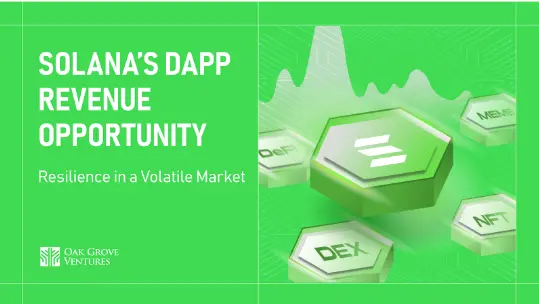According to the inventory of availability solutions and track projects
Author: Jian Shu
DA Solutions Overview
In the previous article on data availability titled "Web3 Science Popularization | Why is Data Availability So Important for Layer 2? (Part 1)", we introduced the data availability (DA) issues faced by L2, which mainly involve the trade-off between security and cost. This trade-off has led to the emergence of both on-chain and off-chain DA solutions, which will be specifically discussed below.
On-Chain Solutions: Proto-Danksharding
On-chain solutions refer to L2 still using Ethereum as the DA layer and relying on Ethereum to reduce the cost of data availability.
Proto-Danksharding (also known as EIP-4844) is Ethereum's solution to reduce the cost of data availability. It introduces a new transaction format—Blob, where transaction data uploaded by L2 will be stored in a non-permanent manner on the Ethereum consensus layer in the form of Blobs, providing L2 with cheaper data availability.
This means that Ethereum will serve as a real-time bulletin board in the future, where data announcements will be deleted after a certain period, and L2 must find ways to store backups of all data themselves.
Proto-Danksharding is expected to go live in Ethereum's Cancun upgrade at the end of this year.
Off-Chain Solutions
In simple terms, off-chain solutions mean no longer treating Ethereum as the DA layer and instead seeking more economical ways to obtain data availability. Depending on the level of decentralization and security, off-chain solutions can be divided into four types: Validium, Data Availability Committee (DAC), Volition, and General DA Solutions.
- Validium
In the initial exploration of scaling solutions on Ethereum, those using validity proofs and publishing data on-chain are called ZK Rollups, while those using validity proofs but publishing data off-chain are called Validium; those using fraud proofs and publishing data on-chain are called OP Rollups, while those using fraud proofs but publishing data off-chain are called Plasma.
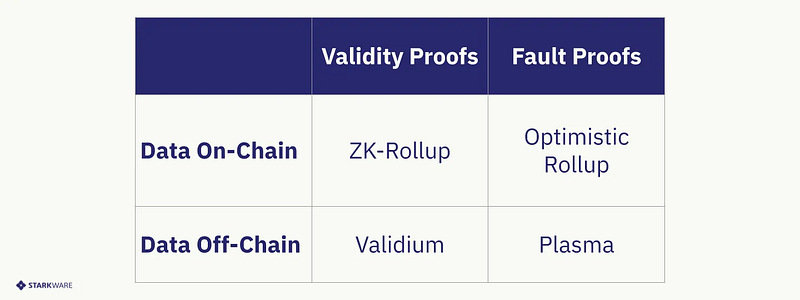
The Plasma scaling solution has now been abandoned by Ethereum, and after Ethereum announced a Rollup-centric scaling route, Validium has gradually fallen out of favor. However, because the transaction data published off-chain by Validium is managed by a centralized operator, Validium is now specifically referred to as a highly centralized DA solution.
In this model, although the privacy of transaction parties is greatly protected and DA costs are minimized, the risks are also the highest. If the off-chain operator fails or acts maliciously, users' funds will be unrecoverable.
- Data Availability Committee (DAC)
To reduce the single point of failure risk posed by a single operator, most Validium implementations currently use a Data Availability Committee (DAC). A DAC is similar to a consortium chain, composed of multiple authoritative or trusted node members who keep copies of transaction data and publicly disclose data in case of operator failure or malicious behavior, facilitating users' withdrawal of funds.
The operational costs of a DAC are also relatively low, but from a security perspective, a small DAC (8-10 people) is still susceptible to private key theft or collective malicious behavior, which can also lead to the freezing or theft of on-chain funds.
- Volition
Volition is a hybrid model that allows users to choose whether the data of individual transactions is published on-chain or off-chain. For example, in a DEX that chooses this model, users can control multiple accounts and, when a transaction is needed, transfer assets to an off-chain data account for frequent and cheap transactions, and then transfer the assets back to the on-chain data account after the transaction is completed.
Thus, compared to pure Validium, Volition can inherit some of Ethereum's security.
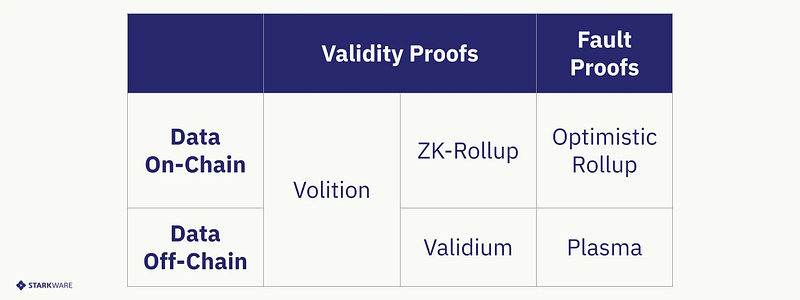
- General DA Solutions
The off-chain DA solutions discussed above are within the context of Ethereum, while there is another category of general DA solutions that can provide data availability not only for Ethereum's L2 but also for more chains and projects. Examples include EigenDA, Celestia, and Avail, which will be discussed in the next section.
Although the technical implementations of general DA solutions vary, the overall idea is to enhance the security of data availability to achieve public chain-level security. Therefore, they have their own validating nodes, block producers, and consensus mechanisms, but lack smart contracts.
Introduction to DA Layer Projects
Under the modular blockchain concept, Ethereum occupies nearly 90% of the consensus and settlement layers, while the execution layer has formed a preliminary "four-legged" pattern (i.e., Optimism, Arbitrum, Starknet, zkSync) after fierce competition. Only the data availability (DA) layer is still in its infancy. Below, I will introduce several popular DA layer projects for readers' reference.
StarkEx

StarkEx is a framework developed by the StarkWare team, specifically designed to provide scaling solutions for certain applications. Since it also offers data availability solutions for applications, it is classified as a DA layer project. StarkEx has three data availability modes: on-chain, Validium, and Volition. Unlike the pure Validium mentioned above, StarkEx's Validium solution integrates DAC to enhance security.
Currently, projects using StarkEx for data availability include dYdX v3, Immutable, Sorare, DeversiFi, and others.
zkPorter
zkPorter is an off-chain DA solution proposed by the zkSync development team, Matter Labs, in April 2021. zkPorter is an independent chain specifically for L2 to publish transaction data, maintaining security through a PoS consensus mechanism. zkSync token holders can stake their tokens to become zkPorter Guardians to validate and sign blocks. This is also one of the reasons the community believes zkSync will issue tokens and airdrops, as zkPorter's consensus mechanism involves governance tokens.
Additionally, in Matter Labs' vision, accounts on zkPorter can seamlessly interact with accounts or contracts on ZK Rollup (zkSync Era). From the user's perspective, the only significant difference may be that zkPorter accounts will incur much lower fees.

ZK Rollup and zkPorter have strong interoperability.
However, it is worth noting that although zkPorter was proposed a few years ago, there has been no progress, and Matter Labs has not disclosed any information regarding zkPorter’s testnet or development progress.
EigenDA

EigenDA is a DA layer project developed based on EigenLayer, but fundamentally, unlike general DA projects like Celestia and Avail, EigenDA is a middleware that does not have its own consensus mechanism. Its security is obtained through the re-staking model of Ethereum validators in EigenLayer.
EigenDA is also the first Active Validation Service (AVS) on EigenLayer, where re-stakers will re-stake ETH into EigenDA to execute data validation services for rewards. Buyers (L2) will publish data to EigenDA to achieve lower transaction costs and higher TPS.
Although EigenDA has not yet launched its testnet, many teams plan to integrate EigenDA into their L2, such as Mantle, Layer N, Offshore, and others.
Celestia
Celestia is a general DA public chain with its own validating nodes and PoS consensus mechanism. Although it is more expensive compared to other off-chain DA solutions, its security is significantly higher.
Celestium is an Ethereum L2 chain that uses Celestia as its DA layer and Ethereum as its settlement and consensus layer.
Celestium implements data availability as follows:
- Celestium uploads proof data (Proofs) to Ethereum as usual but publishes transaction data (Transaction Data) to Celestia;
- The validating nodes of Celestia sign the data availability proofs and send them to the DA Bridge Contract deployed on Ethereum for verification and storage;
- L2 contracts on Ethereum can access it at any time.
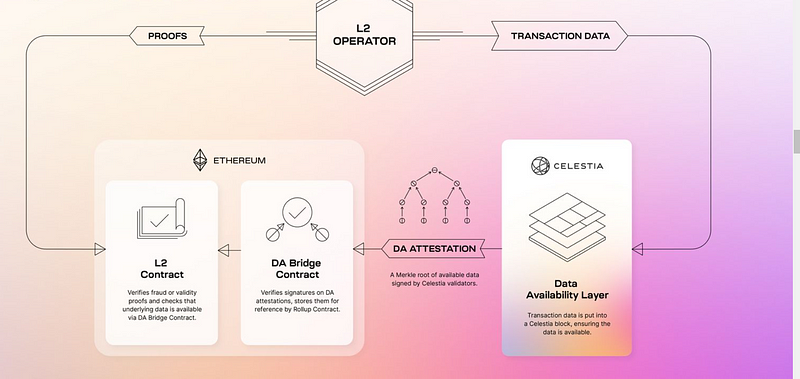
Celestia has completed two rounds of financing, raising $1.5 million in the seed round in March 2021 and $55 million in the second round in October 2022, with participation from several well-known VCs.
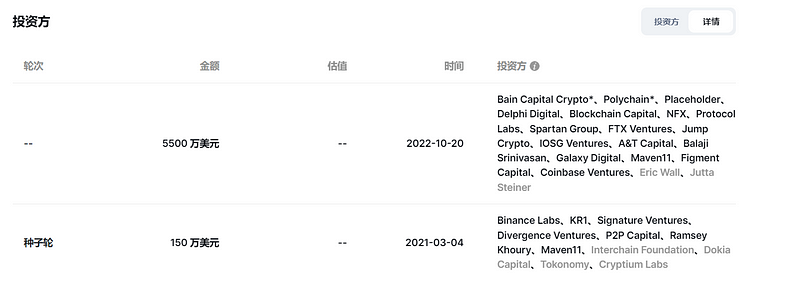
Additionally, the airdrop announcement made by Celestia on September 26 has drawn attention back to the modular blockchain and DA layer track.
According to official statements, Celestia will airdrop TIA (Celestia's native asset) to 7,579 developers and 576,653 on-chain addresses. Developers include public goods and key protocol infrastructure, Eth Research, and public contributors to DA layer projects (such as Avail, EigenLayer, and Solana), while on-chain addresses include active users in Ethereum Rollups and stakers and IBC relayers in Cosmos Hub and Osmosis.
Avail

Avail was originally a project founded by Polygon Labs in 2020 to solve data availability issues, but in March of this year, it separated from Polygon and operates as an independent DA public chain, no longer limited to Polygon or Ethereum.
Technically, it is somewhat more complex than Celestia, with the mainnet expected to launch in the first quarter of 2024, while only the testnet is currently live. The Avail testnet has now progressed to the second phase, and users can participate in various ways, including:
- Token Acquisition: Users can obtain AVL testnet tokens to explore staking and nomination features;
- Blockchain Development: Users can freely develop modular blockchain applications or chains integrated with Avail;
- Network Roles: Users can choose to join the testnet as validators or light clients, thereby facilitating the data validation process.
Clearly, compared to interacting with L2, the interaction threshold for DA layer projects is higher, but given that Celestia has announced an airdrop, those with conditions can explore interactions. Avail currently has a testnet incentive activity "Clash of Nodes Challenges"
https://docs.availproject.org/clash-of-nodes/challenges/… but the conclusion:
- Simply running a node is useless; you won't earn points. To earn points, you need to apply for Validator, which is not easy.
- Ordinary users are currently just waiting for new tasks and can continue to pay attention.
Summary and Reflection
In the future roadmap of Ethereum presented by Vitalik in 2022, it clearly shows that after The Merge, Ethereum's next phase, The Surge, aims to further reduce the cost of publishing data for L2 through EIP-4844. This means that Ethereum is only willing to separate the execution layer while hoping to maintain the functions of the DA layer, settlement layer, and consensus layer.
Therefore, it is not difficult to explain why the proposers of EIP-4844 and L2BEAT are reluctant to acknowledge scaling projects using off-chain DA solutions as L2.
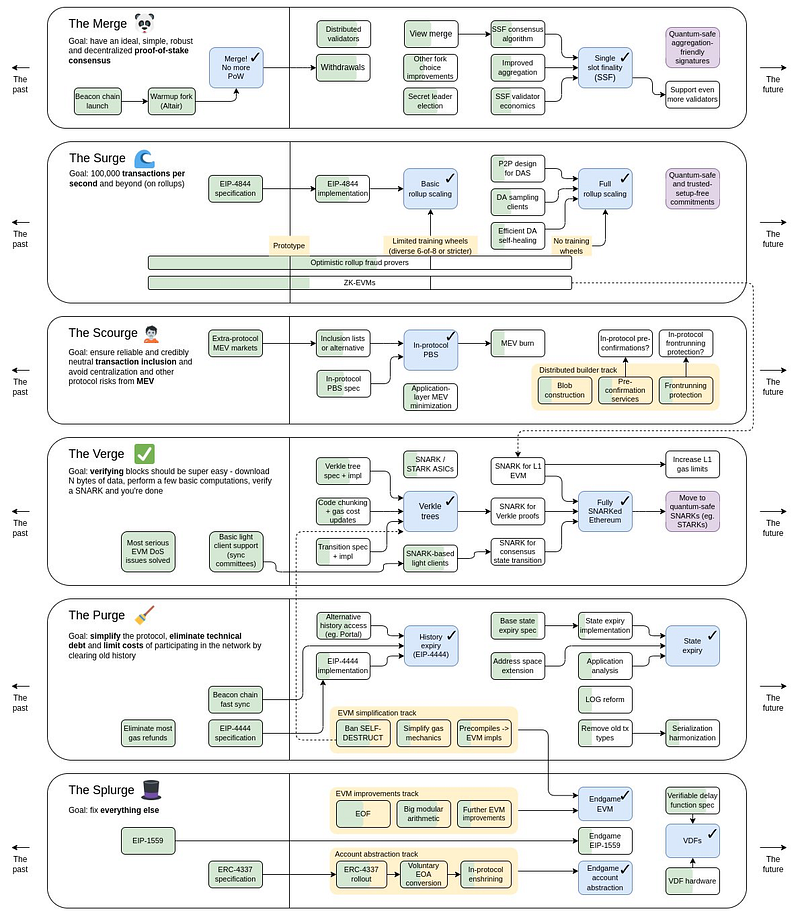
Once the Cancun upgrade is officially completed, these off-chain DA layer projects (especially DA public chains) may directly face competition with Ethereum's business. At that time, besides focusing on lower costs, how will they enhance their competitiveness?
Celestia's decision to issue tokens to incentivize developers and active on-chain addresses at this time may also have strategic considerations for seizing opportunities and winning hearts. At the same time, for users, it is worth looking forward to whether there will be major projects like Optimism and Arbitrum emerging in the future competition within the DA layer.







